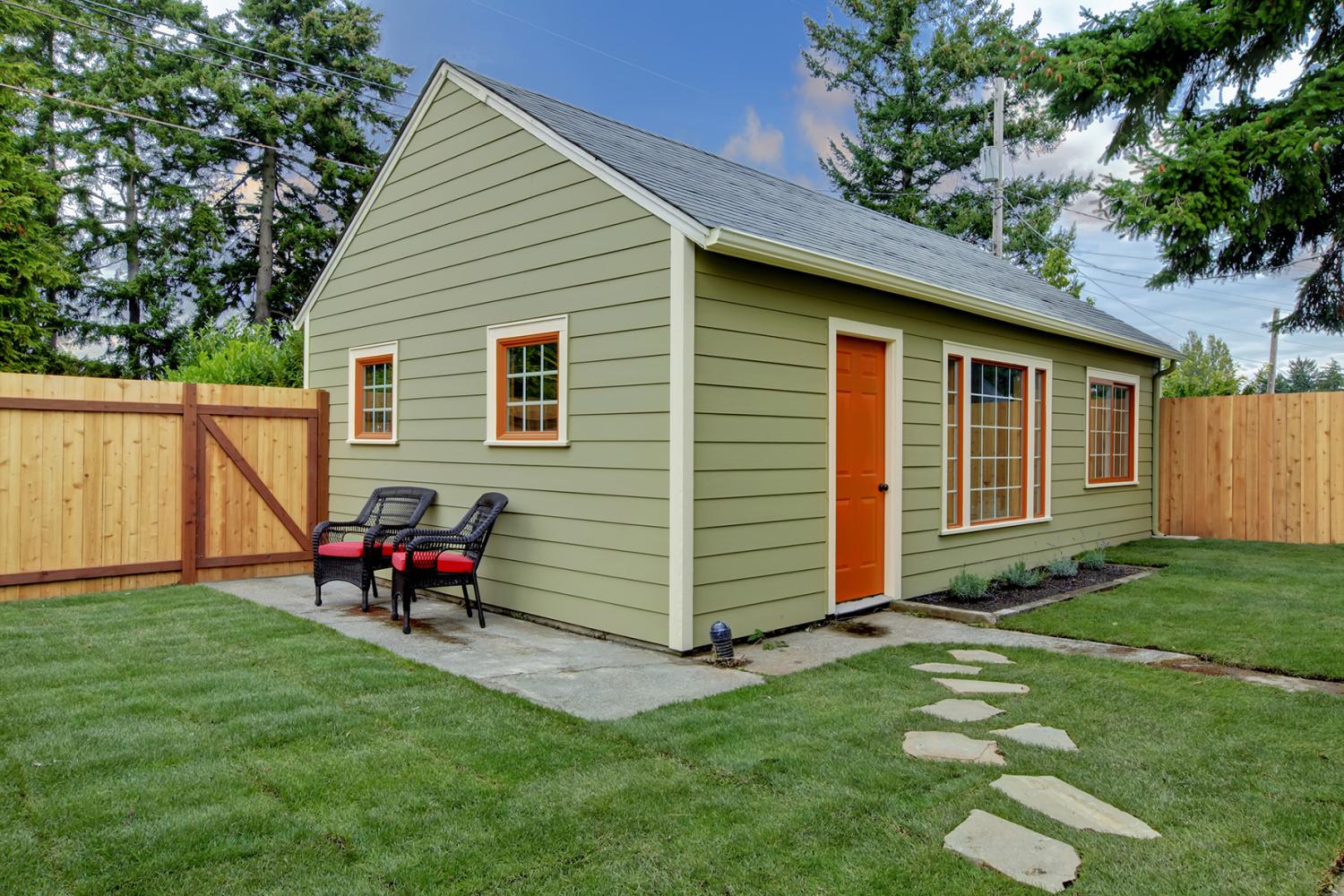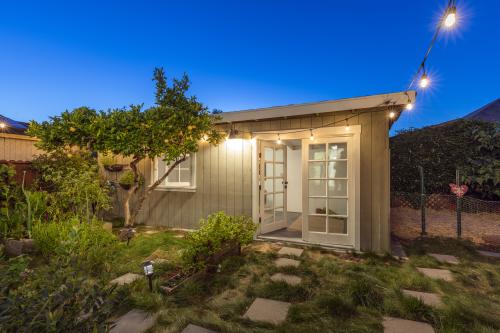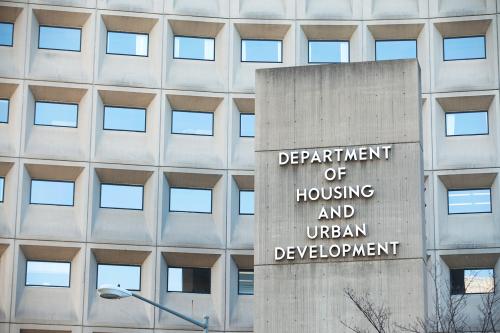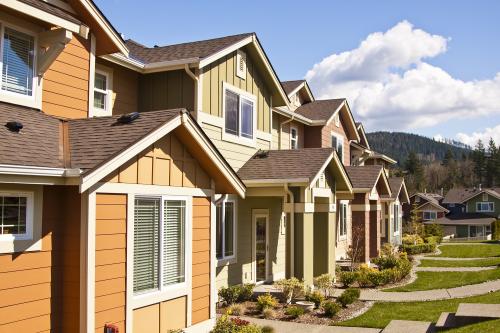Affordable housing policy in the U.S. is not known for rapid innovation. Since the 1980s, two federal programs have accounted for the vast majority of subsidies to low-income households: housing vouchers cover a portion of rental payments to private landlords, and the Low-Income Housing Tax Credit (LIHTC) offers developers subsidies to build income-restricted apartments. Both programs rely on an ecosystem of for-profit companies and nonprofit organizations—ranging from large real estate developers to mom-and-pop landlords—to build, own, and operate the apartments low-income renters occupy.
However, over the past several years, some local governments in Los Angeles have begun experimenting with a new approach to rental subsidies: encouraging individual homeowners to build and rent out accessory dwelling units (ADUs) to low-income households. These efforts are designed to take advantage of California’s changes to land use regulations, which have effectively legalized ADUs in residential neighborhoods across the state.
Los Angeles faces some of the worst affordability problems in the country: More than 1 million renter households are cost-burdened (spending over 30% of their income on housing) and 75,000 Angelenos were experiencing homelessness in 2023 on any given night. Given the urgency of the problem—and the mounting political pressure on elected officials—fresh thinking on how to expand the supply of low-cost rental housing is long overdue.
In a previous report, we considered how different types of subsidies could reduce the development and operating costs to make ADUs affordable for low-income renters (households making less than 80% of area median income). In this report, we examine several broader questions about the successes and challenges of affordable ADUs, including their relative strengths and weaknesses compared to traditional housing subsidies. The analysis is based on a series of interviews conducted with public officials, nonprofit affordable housing providers, researchers, and other organizations across the region. The full list of organizations is shown at the end of the report.
We begin by reviewing the range of policy goals that affordable ADU pilot programs are intended to achieve, then discuss in more detail how the programs can help renters, homeowners, and local governments. We also review some of the challenges these programs have encountered to date. Critically, expanding the number of affordable ADUs will require much greater participation from homeowners, who are effectively the developers and landlords for these structures. While ADU production overall has steadily increased in recent years, it is not obvious that the typical Los Angeles homeowner wants to enter a long-term commitment to lease their ADU to low-income renters and comply with the rules governing housing subsidies.
Affordable ADUs have the potential to address multiple policy goals
ADUs, like other forms of “missing middle” housing, are a relatively new addition to the affordable housing landscape. Since the late 1980s, most new affordable housing in the U.S. has been funded through the LIHTC, which typically produces large multifamily buildings (around 80 apartments per project). Housing vouchers—the largest federal rental subsidy program—allow low-income renters to choose privately owned apartments in any structure type, as long as the unit meets the Department of Housing and Urban Development’s (HUD) fair market rents (FMRs) and minimum quality standards. In practice, most voucher holders rent apartments in multifamily buildings. Affordable ADUs could provide a different option than traditional rental subsidies.
The Los Angeles region offers a useful setting to explore the prospects of affordable ADUs. Four jurisdictions within the region have developed affordable ADU pilot programs. One program, the city of Los Angeles’ LA ADU Accelerator Program, offers operating subsidies for existing ADUs, while the other three offer development subsidies as well as vouchers to cover operating costs. More detailed information on program design and operation is available in Appendix A of our prior report.
The affordable ADU pilot programs received a limited amount of startup funding, and for the most part are not currently accepting applications. The LA ADU Accelerator Program has served the largest number of renters to date; several older adults who rented these ADUs have since moved into long-term senior housing. For context, the final row of Table 1 shows average yearly ADU production (not just affordable ADUs) in all four jurisdictions over the past three years. ADU production has been increasing over time in all jurisdictions, reflecting both strong homeowner interest and growing standardization of financing, design, and construction. In the city of Los Angeles, Los Angeles County, and Pasadena, ADUs account for over two-thirds of all housing permits between 2020 and 2022. However, no data is available on how many of these ADUs are available for rent on the open market, and how many are reserved for personal use or family members.
Both public sector staff who helped develop the four pilot ADU programs and others knowledgeable about Los Angeles’ affordable housing sector indicated multiple goals for these programs, including several potential advantages over the LIHTC and other traditional rental subsidies. The most frequently cited goals include:
- Increasing the number of homes available to low-income renters
- Expanding affordable housing options in high-opportunity neighborhoods, including single-family neighborhoods that typically do not have subsidized housing
- Creating a source of stable rental income for moderate-income homeowners
- Bringing existing illegal ADUs up to code, thereby reducing health and safety risks (Pasadena only)
- Increasing broader public support among homeowners for subsidized housing and low-income renters through exposure to small-scale projects
While the primary intended beneficiaries of affordable ADUs are low-income renters, the programs are also aimed at helping existing homeowners and supporting broader missions for local governments (discussed later in the report). The remainder of this report discusses how well the programs are helping each of these three groups.
ADUs offer low-income renters an alternative housing type and potentially wider range of neighborhoods
The top line goal of affordable ADU programs—like other rental housing subsidies—is to expand the supply of affordable rental homes. Interviewees stressed that ADUs are complementary to, not a replacement for, traditional larger-scale subsidized apartment buildings.
Several interviewees noted that ADUs and similar small structures can be attractive options for low-income renters who do want to live in larger apartment buildings. The city of Los Angeles focused particularly on matching low-income older adults with ADUs, noting that many seniors are familiar with small homes in low-density residential neighborhoods. An academic study found that among those surveyed, the seniors housed through the city’s program reported high life satisfaction, influenced by home and neighborhood quality. The city also saw providing rental subsidies to older adults who have low incomes but have not yet experienced housing instability as an important strategy to prevent homelessness. Affordable ADUs can be viewed either as an end destination for older adults or a temporary home while waiting for space in traditional senior housing (often in fully accessible elevator buildings).
Los Angeles County took a contrasting approach, setting aside their affordable ADUs for people who are currently homeless or have recently experienced homelessness. However, some interviewees questioned whether placing formerly homeless people in individual homes scattered across residential neighborhoods made it more difficult to provide case management and supportive services.
Nearly all interviewees said that a key advantage of ADUs is the potential to build them in low-density residential neighborhoods where larger subsidized buildings are not allowed because of zoning or resident opposition. From a purely practical standpoint, ADUs require less land, so can fit virtually anywhere (literally in people’s backyards), while large buildings often require assembling or purchasing large land parcels. California’s statewide policy changes over the past several years have protected ADUs from the lengthy discretionary approval process—and associated regulations, such as prevailing wage requirements—that delays or increases costs for both market rate and subsidized apartment buildings. Interviewees noted that these policy changes have brought about much more widespread acceptance of ADUs in low-density residential areas; the Los Angeles Times occasionally features ADUs with high-end architectural designs, increasing the perception that ADUs can be attractive additions even in affluent neighborhoods.
Designated affordable ADUs are unlikely to be built in the most affluent areas, but they can provide an option for moderate- and middle-income seniors to remain in their current neighborhoods (i.e., age in place). Several interviewees stressed the importance of diversifying the housing options in single-family neighborhoods so that older adults can stay connected to family, friends, health care providers, and other key parts of their social networks. One potential limitation is that some low-density residential neighborhoods have limited public transportation, so are better suited to renters who own cars and are able to drive.
Recruiting homeowners to become affordable housing developers and landlords has pros and cons
The strongest selling point of ADUs—they provide small homes that can be scattered throughout low-density residential neighborhoods—is also one of the biggest challenges for supplying affordable housing at the scale needed across the Los Angeles region. Expanding the affordable housing stock through ADUs requires individual homeowners to become developers and landlords—and to accept the restrictions that come with housing subsidies.
Interviewees noted that there is a “Goldilocks” challenge in finding homeowners who want to rent out ADUs to lower-income households. Affluent homeowners have the resources to finance and build ADUs (often through personal savings or home equity lines of credit), but are more likely to build them for personal use (e.g., home offices) or to host family and friends. Even if homeowners initially do not intend to rent the ADUs to third-party tenants, some of them may become available for rent in the future. Moderate- and middle-income homeowners are interested in ADUs’ income-generating potential, but they face greater challenges in financing development, and may be reluctant to accept restrictions on rent levels. Our previous analysis found that for new ADUs developed without any subsidy, rents are likely to be affordable to households earning median income in the Los Angeles region. However, bringing rents down to affordable levels for low-income households (those earning 50% to 80% of area median income) would require substantial subsidy.
West Hollywood provides an interesting window into the potential homeowner demand for ADUs. The city is small in land area and densely developed. According to the Census Bureau’s American Community Survey, a majority of households rent their homes, largely in multifamily buildings; West Hollywood has roughly 2,000 one-unit detached, owner-occupied homes—the typical target for ADUs. Moreover, homeowners are quite affluent, with a median income around $145,000 (well above the Los Angeles County median owner-occupant income of $119,000) and are less likely to need extra rental income from an ADU. West Hollywood’s affordable ADU pilot program has one project currently underway: a double ADU added to a small multifamily property.
While California’s statewide policy changes have made ADU development easier, interviewees reported that navigating the development process is still challenging for many homeowners. Both Pasadena’s and West Hollywood’s affordable ADU programs provide project management to support homeowners; staff shared that these services were a distinct “selling point” in engaging homeowners to participate. However, many local governments do not have internal staff capacity to help individual homeowners. While some nonprofit organizations in the Los Angeles region offer this type of support, they commented that the permitting process still varies widely across jurisdictions—a hindrance to scaling up ADU production. Some interviewees commented that the complexity and direct costs of ADU permitting reflect localities’ underlying wariness about development. For instance, some localities have strict requirements for contractor licensing, and others require ADU owners to become licensed as small businesses. Permitting fees and related costs, such as utility hook-up fees, can add substantially to development costs. Even in cities with pre-approved ADU plans, variation in site conditions can delay the process.
Asking homeowners to rent their ADUs to low-income tenants who receive housing vouchers or equivalent subsidies adds further complications. Most affordable ADU programs require ADU owners to commit to income restrictions for some period of time (ranging from five to 10 years in our sample). Some interviewees framed this as a potential upside for property owners: limited tenant turnover and stable income, backed by the government. Other interviewees noted that some homeowners are wary of the additional process requirements—property inspections to meet HUD’s minimum quality standards, annual income certification of tenants—as well as concerns about whether they could evict undesirable tenants. A frequently repeated theme among interviewees was the need to educate and train homeowners about their rights and responsibilities before they enter the process—which in turn requires localities to have sufficient staff capacity, or resources to pay a third-party contractor. Several programs noted high initial interest from homeowners in their affordable ADU programs, only to have participants drop out at later stages.
Local governments view ADUs as complements to traditional rental housing subsidies, but are still in the exploratory phase
When asked how ADUs fit into the broader affordable housing ecosystem, most interviewees said that ADUs are complements to traditional subsidized apartments, rather than substitutes. Compared with the long, complex, discretionary process of building LIHTC projects, ADUs are seen as a quick and cost-effective way of expanding low-income housing. This is particularly true of the LA ADU Accelerator Program, which matches low-income seniors with existing ADUs and uses flexible philanthropic funding to subsidize operating costs. Even among the three programs that incentivize new ADU development, the programs have a shorter development timeline than large LIHTC buildings, and often substantially lower per-unit costs. Notably, developers must pay to acquire land for LIHTC projects, while ADUs are built on land the homeowner already purchased. Rent levels in all four affordable ADU programs are set based on HUD’s FMRs: around $1,500 per month for a one-bedroom apartment in Los Angeles County in 2020.
However, all interviewees mentioned the lack of dedicated long-term funding as a serious constraint on scaling up affordable ADU programs. All four programs studied were developed as short-term pilots, and have struggled to secure longer-term commitments. The city of Los Angeles received a $1 million grant from Bloomberg Philanthropies’ Innovation Team (I-Team) program, which reduced the operational bureaucracy relative to federal vouchers, but which was time limited. Los Angeles County, Pasadena, and West Hollywood have allocated some of their vouchers to ongoing operations, but do not have dedicated funds for upfront development subsidies. Eligible homeowners can apply for pre-development grants from the California Housing Finance Agency as long as the funding lasts and the state chooses to continue the program. Pasadena and West Hollywood conceived of their development subsidies as revolving loan funds, with the goal for homeowners to secure longer-term loans upon lease-up and pay back the development subsidy. However, rising construction costs and interest rates make this considerably more difficult. Several interviewees noted that private mortgage lenders have not yet developed standardized underwriting or loan products to support ADU development (especially among less affluent homeowners), although some community development financial institutions (CDFIs) are working in this space.
In the city of Los Angeles, turnover among elected officials has limited the Accelerator Program’s momentum. The program was launched in 2020 under former Mayor Eric Garcetti, who several interviewees and the media described as an enthusiastic proponent of ADUs. Following the 2022 elections, Mayor Karen Bass has pivoted to focus on large housing projects, such as motel conversions, to reduce homelessness. Interviewees suggested that the LA ADU Accelerator Program had “lost its champion inside City Hall” and has become a lower priority.
Could ADUs change public perceptions of affordable housing more broadly?
Communities across California are still adapting to statewide policy changes that lower barriers to building ADUs. Local governments are incorporating these changes into their zoning laws and other development permitting procedures. Homeowners have shown increasing interest in adding ADUs to their properties, either for personal use or as a source of income. As the market for ADUs grows, the real estate industry is developing more standardized approaches to support them, including pre-approved floor plans and financing tools.
As ADUs become more integrated with housing markets in Los Angeles, some policymakers and affordable housing advocates hope that they can create new opportunities for low-income renters—a relatively lower-cost way to expand the affordable housing supply, with small-scale homes that fit discreetly into low-density residential neighborhoods. Several interviewees expressed the hope that homeowners who choose to participate in the affordable ADU pilot programs—and their surrounding neighbors—may become more comfortable with the concept of low-income renters sharing their community.
To date, affordable ADU pilot programs across the four jurisdictions have assisted fewer than 40 low-income renter households, reflecting the lack of long-term subsidies, challenges homeowners face in navigating the ADU permitting process, and some changes in political leadership. To make ADUs a larger segment of the affordable housing market over the coming years will require both more financial support as well as substantially higher take-up rates among homeowners. Local and state lawmakers should bear these concerns in mind as they move forward with policies to encourage other forms of “missing middle” housing, such as duplexes and lot splits.
-
Acknowledgements and disclosures
Funding for this research was received from the Hilton Foundation. We appreciate the time and expertise shared by staff at the following organizations: Abundant Housing LA; Bloomberg Center for Public Innovation at Johns Hopkins University; Casita Coalition; the city of Los Angeles; the city of Pasadena; the city of West Hollywood; Genesis LA; Habitat for Humanity of Greater Los Angeles; HPP Cares; Los Angeles County; Office of: Office; and the Southern California Association of Governments. We thank Mike Lens, Mike Manville, Paavo Monkkonen, and Shane Phillips for thoughtful comments. All errors and omissions are the responsibility of the authors.
The Brookings Institution is committed to quality, independence, and impact.
We are supported by a diverse array of funders. In line with our values and policies, each Brookings publication represents the sole views of its author(s).








